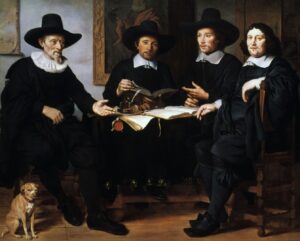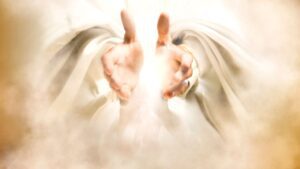Have you ever wondered what happened to Jesus’ disciples after his ascension into heaven? Can you even name them? I had to look them up. I learned a lot which I am going to share with you.
So last month we explored Peter’s life and last year we considered Judas Iscariot and his fate. That leaves ten more to investigate. (As an aside, let me clarify the words disciple and apostle which are often used interchangeably. An apostle is a “messenger” or “one who is sent” while a disciple is a “student” or “learner.”) Listed below, the apostles are in the order they are most often mentioned in the literature. Peter followed Andrew and Judas Iscariot is always last.
Andrew was an early disciple of John the Baptist. He was enthusiastic; he introduced his older brother Peter to Jesus. Unlike Peter, he was not a dominant person, but he was a fervent preacher, and was a significant contributor to the early church. He died a martyr’s death. He welcomed his crucifixion with courage to be nearer to Jesus.
James and John were sons of Zebedee, a man of affluence. They may have been spoiled. In Scripture, James, the older son remains somewhat obscure, yet he was one of Jesus’ inner three. John was much more in the lead during the three years of training with Jesus. They were both known as intensely zealous. Jesus nicknamed them the Sons of Thunder. James was beheaded by order of King Herod Agrippa I of Judaea. Roman Emperor Domitian banished John to Isle of Patmos where he wrote Revelation, the last book in the Bible. When freed he went to preach in Turkey where he died at 100. The only one not martyred!
Philip and Nathanael (aka Bartholomew). Their names are always used together. According to my research, almost nothing is known about Philip. He was a Jew who had a calling for evangelism. He told Nathanael the “One foretold by Moses and the prophets had been found.” They were close companions and studied the Old Testament together. Philip was stoned and crucified in Hierapolis, Phrygia; Nathaneal carried a translation of Matthew’s Gospel to northern India. Like the others, Nathanael was a martyr; skinned alive and crucified, head downward by the idolaters of Armenia, Western Asia, near Turkey.
Thomas, (aka “Doubting Thomas,”) was a candid skeptic regarded as a pessimist. No details are given about Thomas in the first three Gospels other than the mention of his name. Some scholars see him as courageous and loyal. Upon touching Jesus’ wounds, he no longer doubted. It is suggested that Thomas started the Christian church in India; but he was speared and killed.
Matthew (the tax collector) was in a profession the people of Israel despised. Tax collectors took extra money, they paid off the Romans, and they filled their own pockets. He gave up his career to follow Jesus. He was an educated man; he is known as the writer of the Gospel of Matthew which he intended for the Jews. Another martyr, Matthew took the Gospel to Ethiopia and Egypt, but was killed with a spear on the orders of Hircanus, the king.
James (the Less) is only mentioned briefly in Scripture. Scholars think this is why he is referred to as James the Less. But they also note that although he in the background, Jesus chose him to be one of the twelve. He was educated and used to further the mission of Jesus. He was a valuable team member. Another martyr, he was either crucified in Sinai or stoned to death in Jerusalem.
Jude (aka Thaddeus, Judas) lived in relative anonymity. Little is known about Jude, perhaps because of several different names. He is not to be confused with Judas Iscariot. His brother was James the Less. He learned the gospel directly from Jesus and also penned the book of Jude. Of note are the final two verses of Jude that are an “expression of praise to God,” that some scholars say are the finest in the New Testament. We rely on tradition for what happened to him. The historian Eusebius reported that Jude healed the King of Edessa, Abgar. (Of course, the records have been destroyed, so that can’t be verified.) The same tradition says he was clubbed to death for his faith.
Simon (the Zealot) in his younger years may have been a political activist for Israel. When he embraced Jesus, he was fiercely loyal, passionate, courageous, and filled with zeal. Scholars speculate that after preaching on the west coast of Africa, he went to England where he ended up being crucified in 74 AD. Ahh, another martyr.
If you have read this far, I’m almost done. I have two more things. First, the disciples/apostles elected a replacement for Judas Iscariot. His name was Matthias and the apostles elected him after Jesus had ascended back to heaven. Nothing else is known of Matthias; he is not mentioned again in the Bible. But after receiving the Holy Spirit with the other apostles on the day of Pentecost, it is surmised that Matthias preached the gospel in Judea and Colchis, where he was crucified.
Second, although the disciples were all different, they were known for their unwavering faith. Ordinary men, who courageously spread the words of Jesus. Most were martyred for their beliefs. Today as we “reflect the radical love of Jesus” here at Trinity, we don’t have to fear martyrdom. Our goal is to reach out and spread the words of Jesus and God’s love to others. We are the apostles of our times.


